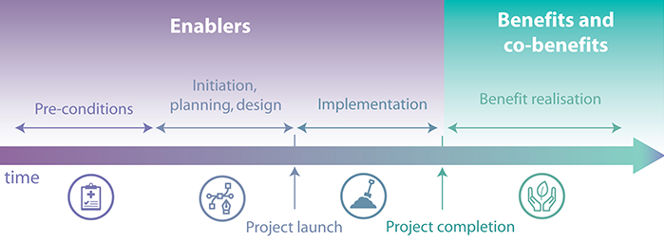Governance Innovation reports

As part of Deliverable 5.1 of WP5 – Governance Innovation, IIASA and University of Geneva researchers described and compared the institutional, legal, social and economic drivers of three cases of nature-based solutions (NBS) to climate risks in mountain landscapes.
Drawing from three case studies in Nocera Inferiore (Italy), Munich (Germany) and Wolong (China), they identified key governance enablers of successful NBS ‐ that is, the contextual pre‐conditions, policy processes and institutions that proved helpful or even essential for the initiation, planning, design and implementation of NBS. Results show that the most critical enablers involved governance innovation in three areas:
polycentric governance (novel arrangements in the public administration that involved multiple institutional scales and/or sectors)
NBS co‐design (innovative stakeholder participatory processes that influenced the final NBS)
financial incentives (financial incentives for community‐based implementation and monitoring of NBS).
Further enablers for realizing NBS, as demonstrated in the three cases, include environmental advocacy coalition groups, along with their individual champions, and a major triggering or modelled event, which opened a window of opportunity to advocate for a nature‐based or hybrid green‐blue‐grey solution.
Findings show that the transition from grey solutions to NBS can be justified with, and contribute to, multiple global agendas and targets, including disaster risk reduction, climate change adaptation, halting biodiversity loss and sustainable development.

Figure: The NBS lifecycle (based on Kerzner, 2014; Toxopeus & Polzin, 2017. Sources: Icons by sahua d, Adrien Coquet and Line Icons Pro from the Noun Project, Design: Juliette Martin)

Figure. The three selected case studies (Sources: Pin by Yo! Baba from the Noun Project; Illustration 107207656 © Miceking—Dreamstime.com, Design: Juliette Martin.)